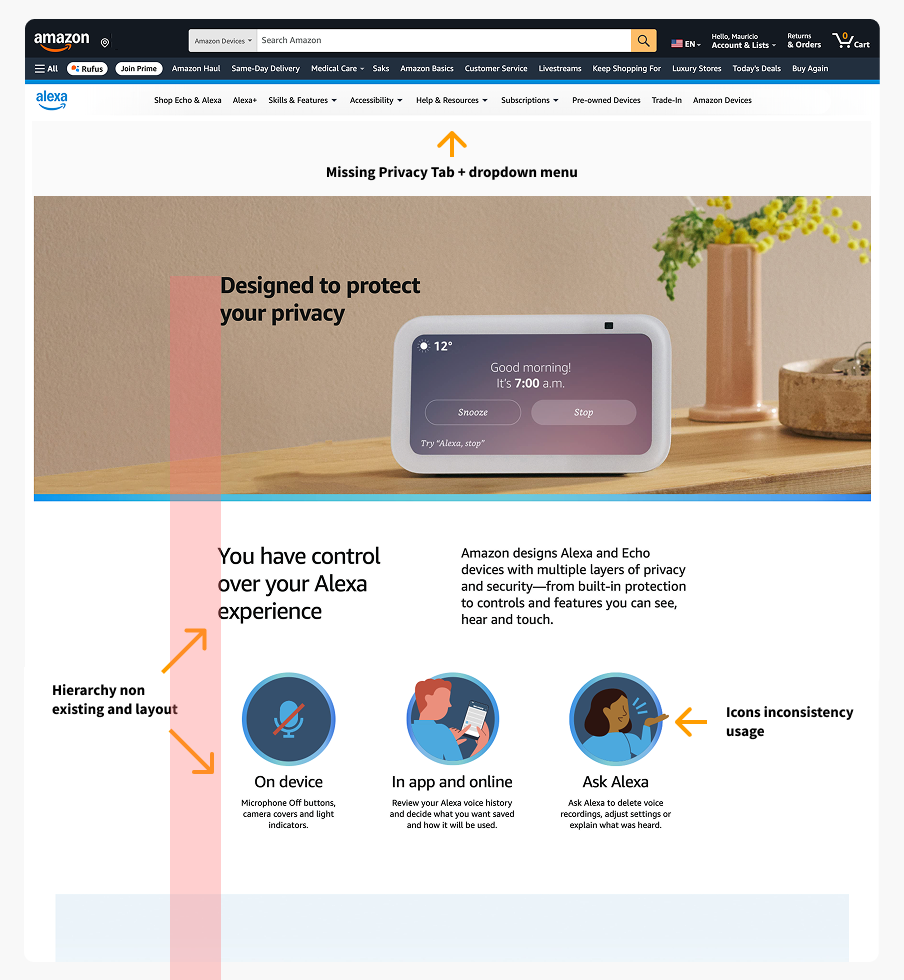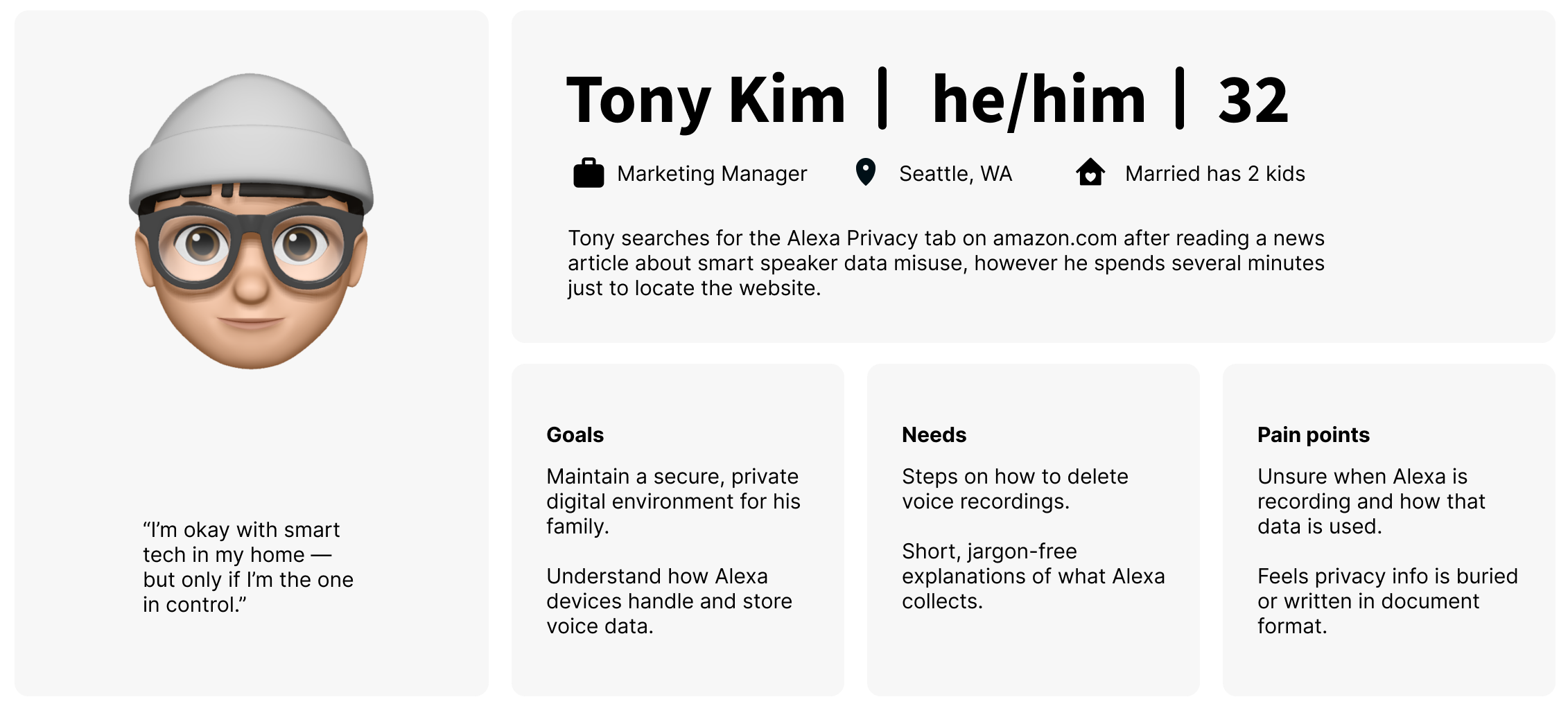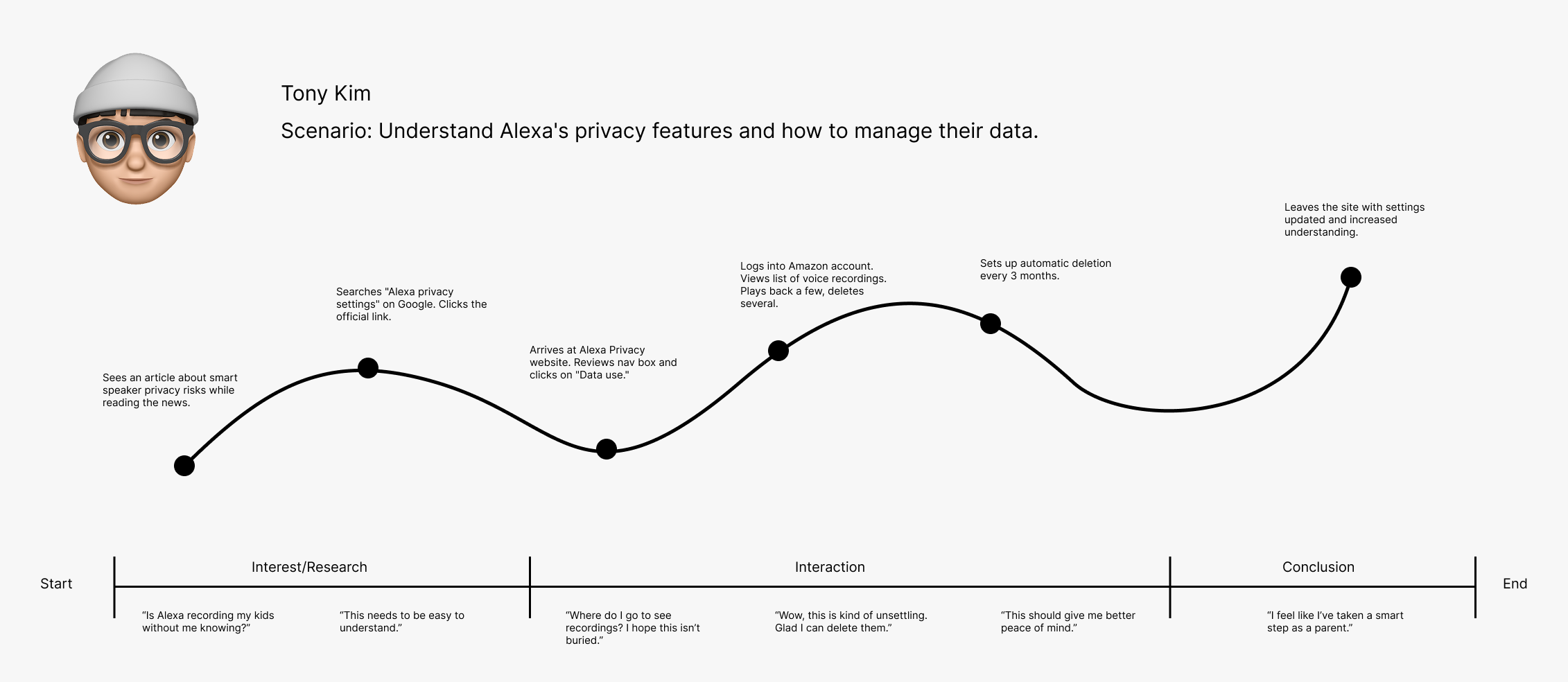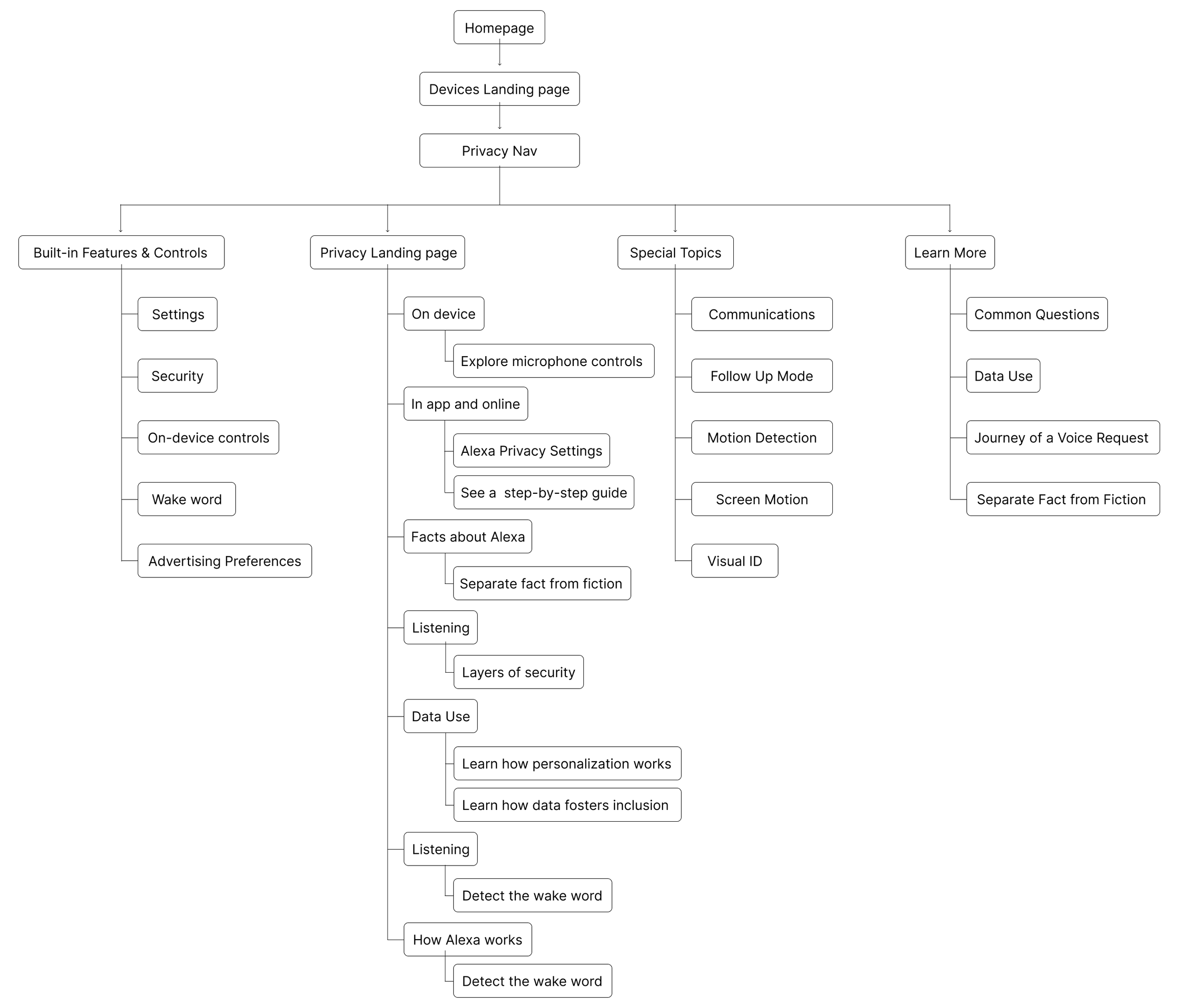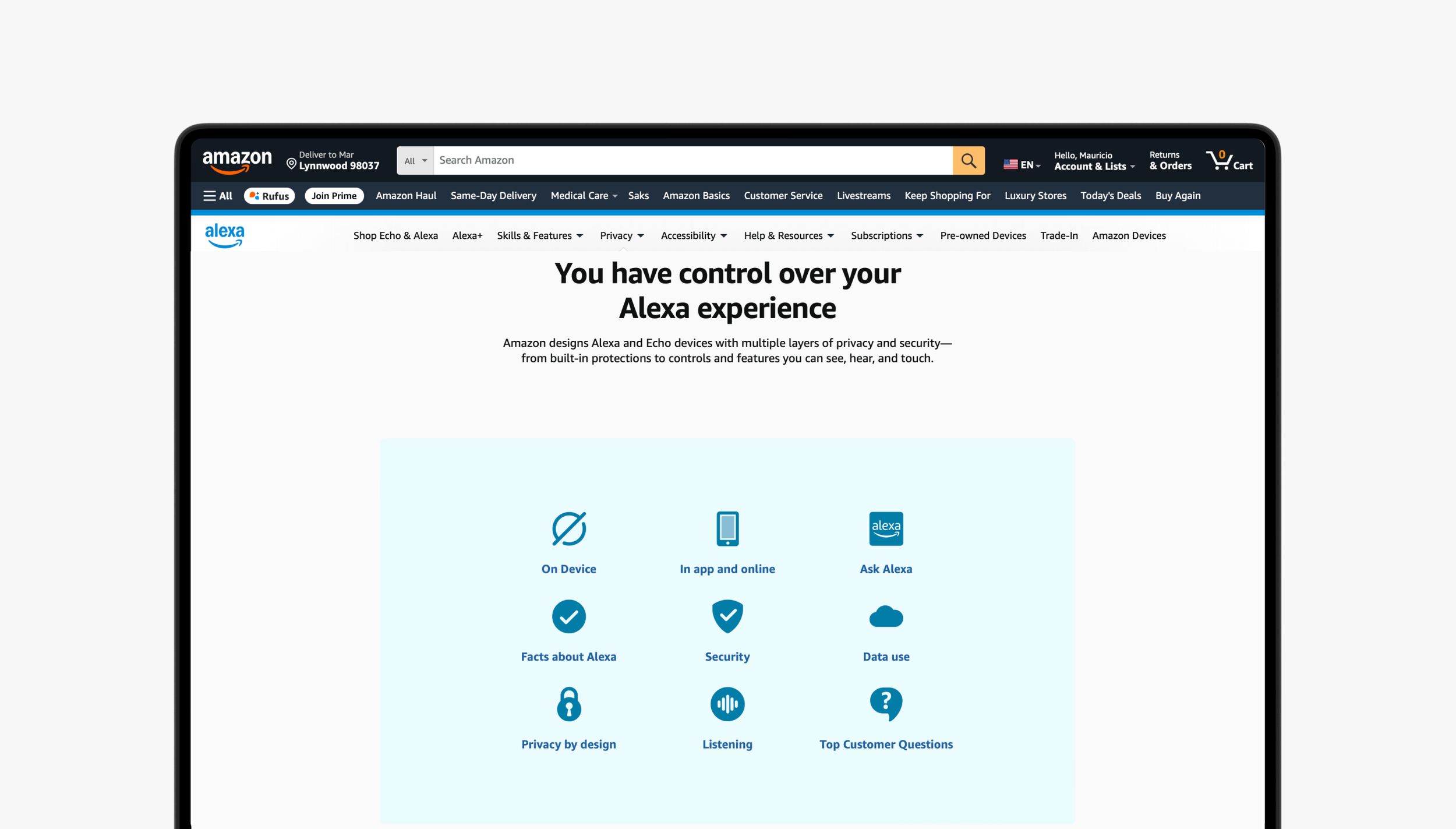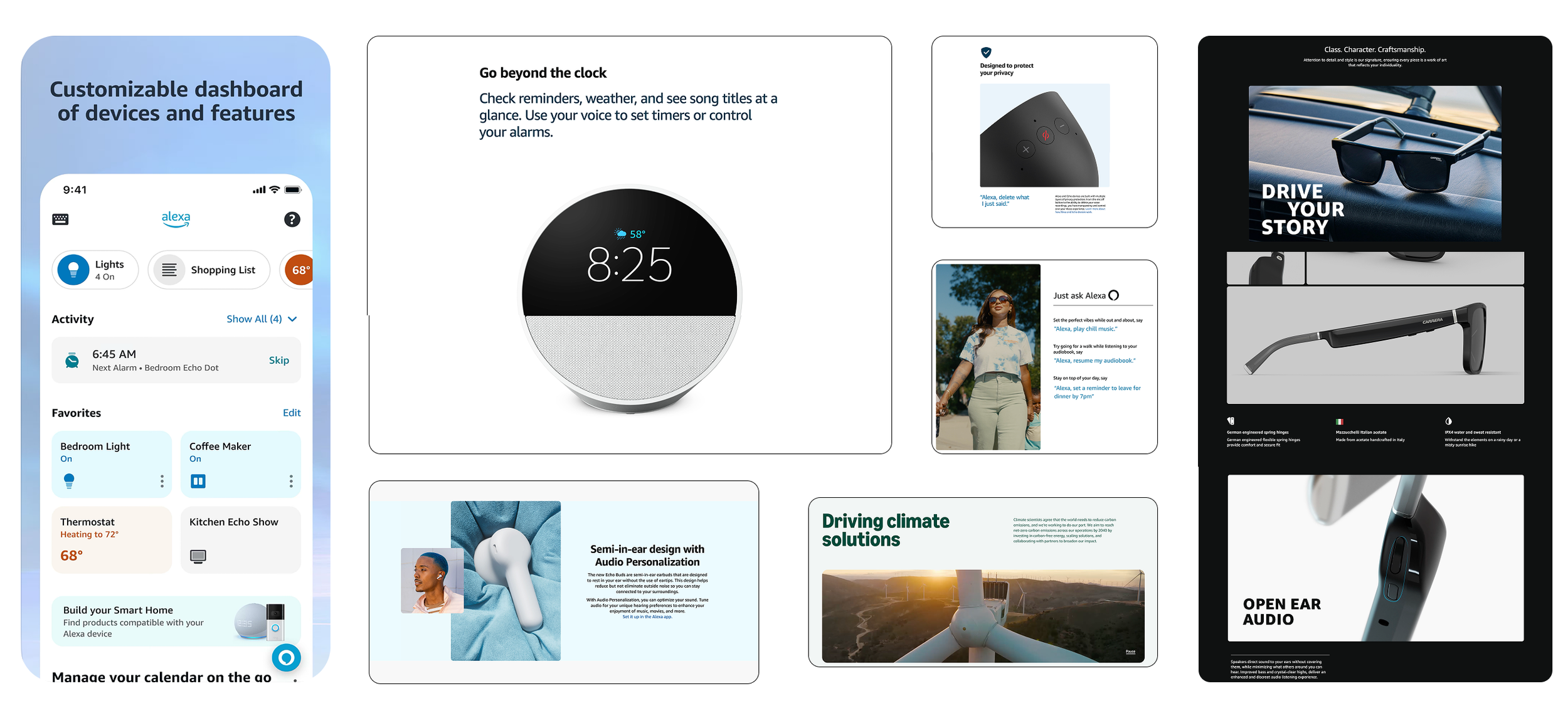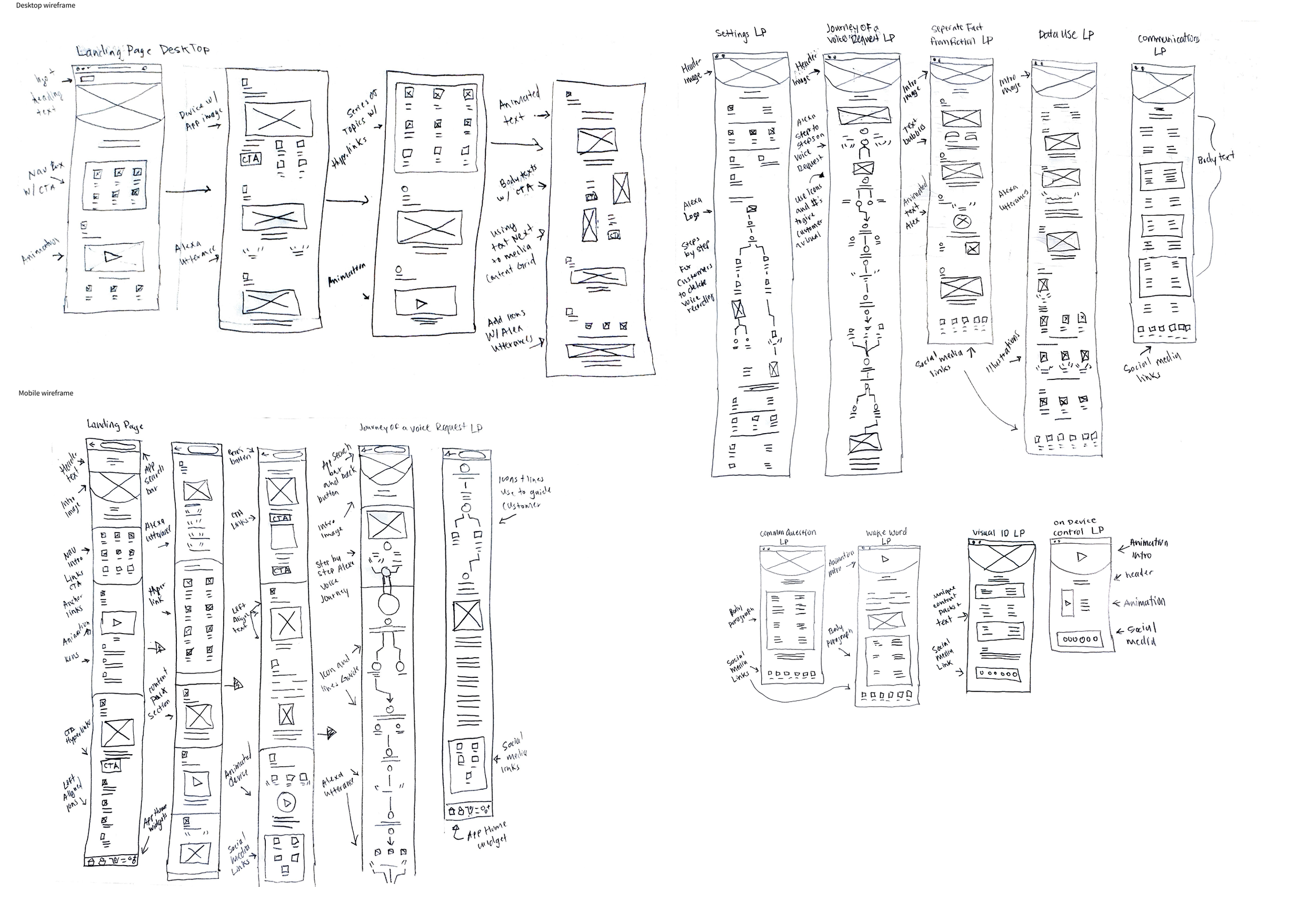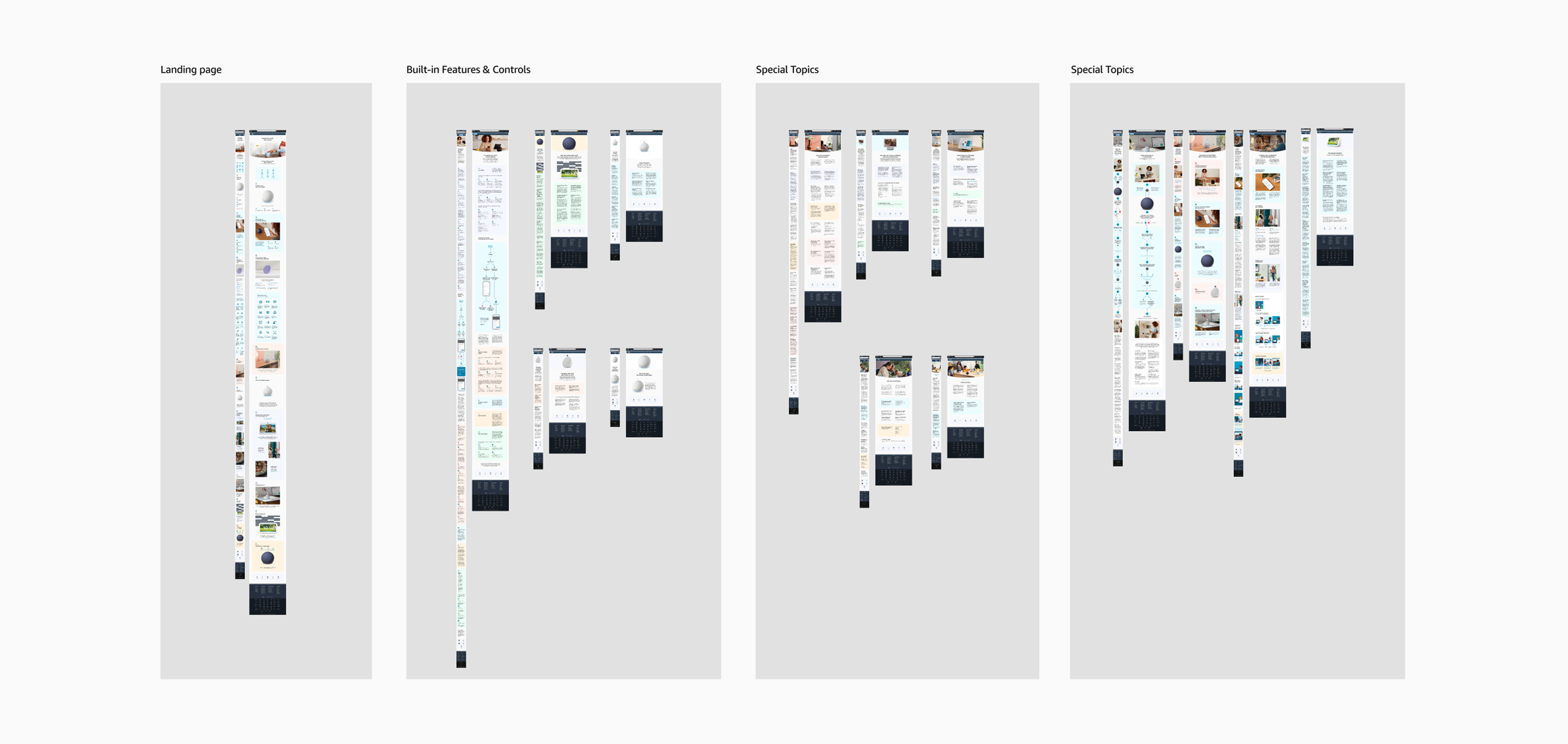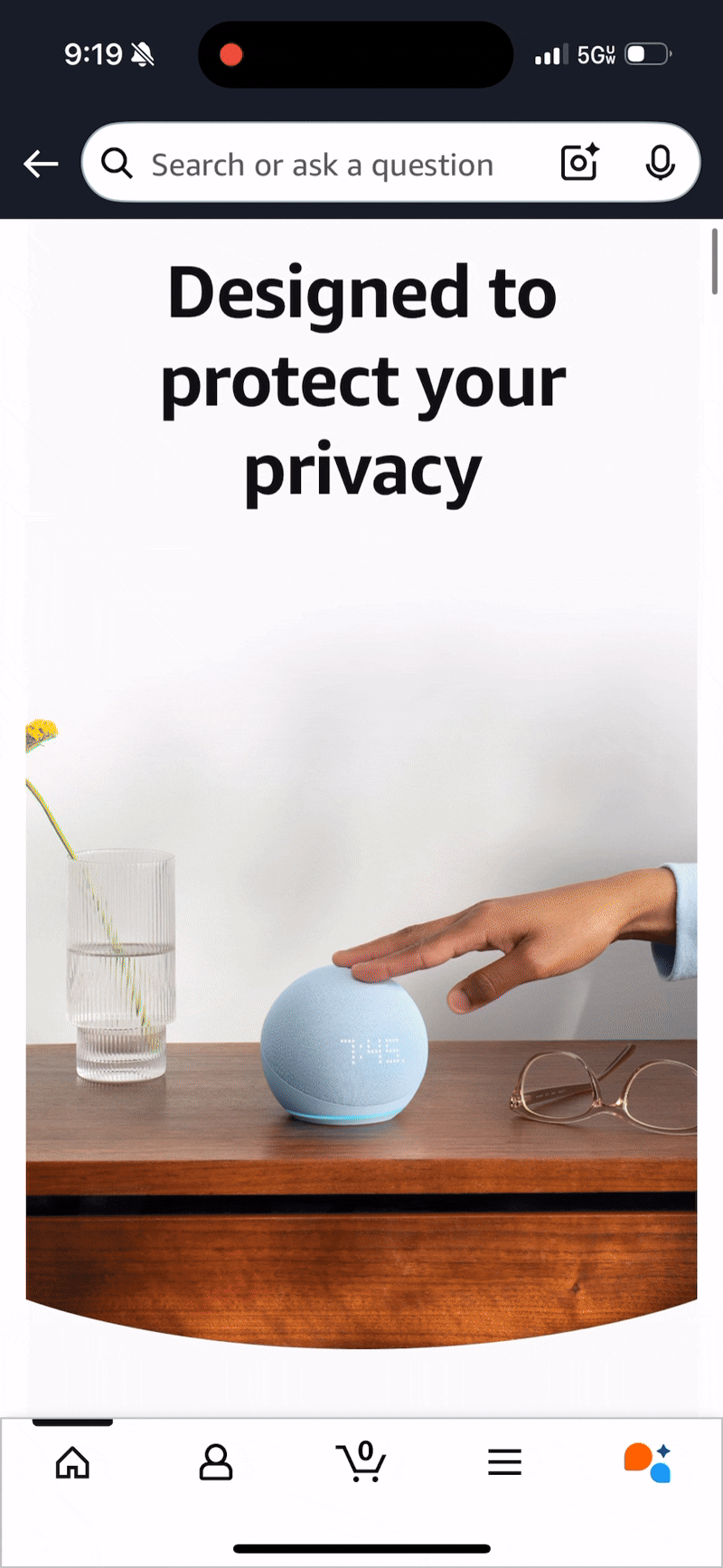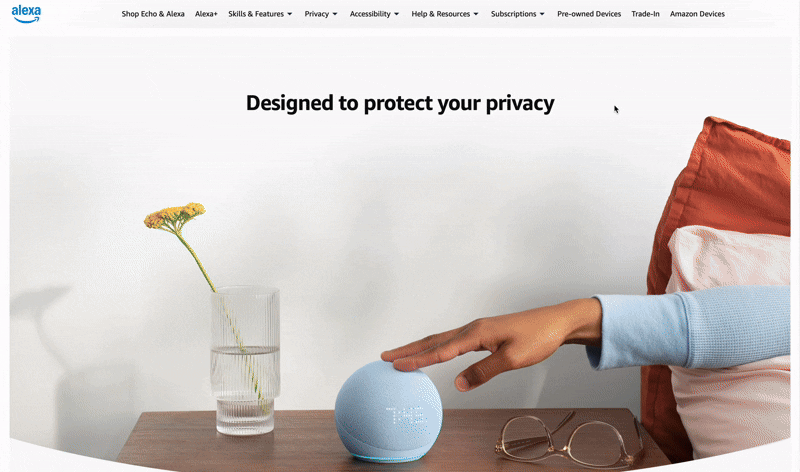Designed to protect your privacy.
Overview The Alexa Privacy page serves as a central resource for customers to understand how their data is handled and how to manage their privacy settings. However, usability testing revealed confusion around navigation, technical jargon, and a lack of clear paths to key actions like reviewing voice history or managing data permissions.
As part of Amazon Devices Brand Studio, I collaborated with the Alexa marketing team to redesign the user experience & interface design on the Alexa privacy landing page website series.
My role focused on ideating, rapid conceptualization and design. I worked on defining and transforming complex ideas into high-fidelity prototypes.
Role UX/UI Designer
Disciplines user experience and interface design, motion, visual design
Tools Figma, Photohop, After Effects, Framer, Smartsheet, Quip
Timeline 2023 - 2024
Goals
1. Clarity: Make privacy information understandable to non-technical users
2. Usability: Improve navigation and access to privacy controls
3. Trust: Reinforce Amazon’s commitment to user data protection
4. Engagement: Increase interaction with privacy features (e.g., voice history deletion)
Target audience users with accessibility and users who are concern about Alexa privacy interactions.
Challenge The existing Alexa Privacy page was dense, technical, and difficult to navigate—especially for non-technical users. Critical information about how Alexa uses voice data, and how customers could control or delete that data, was buried in long paragraphs and scattered links. As a result, users often felt overwhelmed or uncertain about their privacy settings, leading to decreased engagement and trust.
Our challenge was to redesign the page to build transparency and confidence by making privacy information not only accessible, but also easy to understand and act on—while staying compliant with strict legal and policy guidelines.
Design Process
Final Designs
Figma Prototype
The refresh pages now feature updated colors, typography, layout and patterns that bring the design in line with current Alexa design system and accessibily. Key product details are more prominent, creating a page that’s not just visually appealing but also more effective at delivering information. Finding information and taking action is now seamless, thanks to improved navigation. With the added navigation box intro, users can now jump between sections using anchor links. Also we added the privacy tab into the amazon devices row tab, which helps user find the privacy section plus other privacy topics when hovering.
Interactive Prototype
Reflection
Post design outcome
The launched of the new Alexa privacy website was a success. Everyone from Stakeholders to the brand studio team were stoke and thrilled to see the new Alexa branding showcasing on the updated Alexa privacy website.
This website was made for everyone. I deliver this website with accessibility in mind. User bounce rate decrease from 68% to 28%. The time user spent on the site increase from 52s to 2mins. Also user engagement increase by 3x.
There are still parts of the website where I would like to improve. For example the amazon mobile app needs to add the navigation tab bar below the search bar. Also I would like for a more seamless scrolling with the added sticky navigation bar for the desktop version. The sub pages also need the drop down text feature in order to reduce user cognitive overload.
Research
Identifying problems
New Alexa users that purchase a device had trouble finding and navigating the Alexa privacy website. Customers with accessibility had a hard time using and navigating the website. The Alexa privacy page lacked usability, accessibility and important information where nowhere to be found or accessible thru the amazon.com website.
To address these challenges, we conducted user surveys, develop personas that reflected the goals and frustrations of typical new users. The image to the right shows how the customer had no visibility or easy access to the Alexa privacy navigation tab or dropdown menu.
Research
Competitor analysis
I analyzed privacy sections from Google, Apple, and Microsoft to benchmark usability, tone, experience and visual clarity. This helps me to identify best practices and areas for differentiation.
Synthesis
User persona
I developed a user personas to represent alexa customers and mapped their end-to-end journeys to identify key goals, frustrations, pain points, and areas of friction.
Synthesis
User Journey
I developed a user journey to map out on how Tony would navigate his current situation, aiming to understand the highs and lows of his emotions while navigating the Alexa privacy website. This comprehensive visualization provides valuable insights into the user experience, enabling a targeted redesign to optimize user engagement for the Alexa privacy page.
Synthesis
User Flow + Information Architecture
I mapped the full onboarding flow of the Alexa Privacy Website, detailing the major sections, their contents, and the logical pathways users can take to navigate and interact with their privacy information.
Ideation
Developing a Solution
I designed the Alexa privacy website to be easy-to-use hub with a clean user friendly interface, hierarchies, and CTA placements. By designing this page I made sure to guide users step-by-step in understanding and how to manage their data.
Ideation
Moodboard
I created a moodboard inspired by elements from the Amazon branding, Alexa design system, Alexa app design, Amazon climate sustainability design, and Alexa Carrera. This board serves to guide the Alexa privacy website design language and interactions, blending Amazon sleek interface standards with creative design styles.
Ideation
Low + High Fidelity wireframes
Here are some of my initial thought processes regarding research and the goals for the Alexa privacy website. The low-fidelity designs provide initial exploration ideas of content grid packs, layout , and CTAs.
The high fidelity wireframe provides user with a welcoming and unique design experience.




